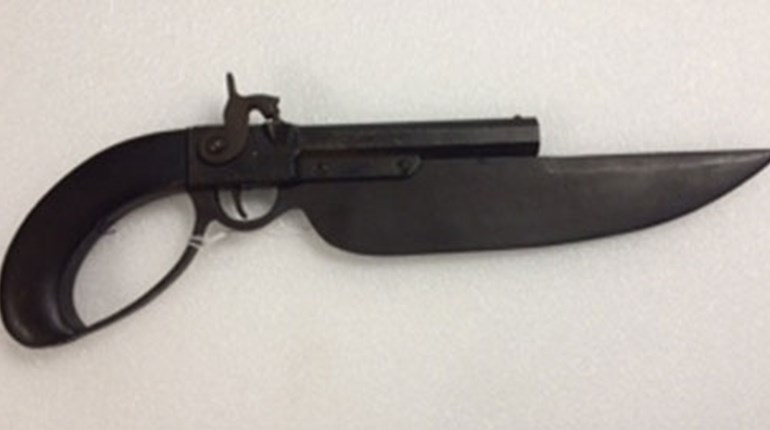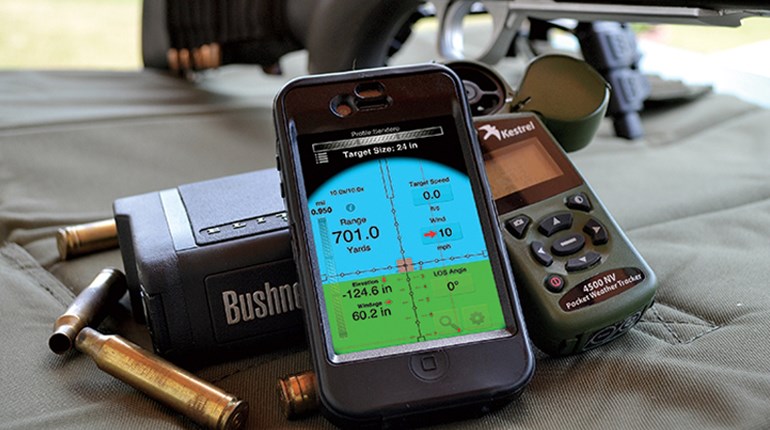
The Bayonet has been in the news lately. Unfortunately, this classic tool of war is now temporarily associated with people who have never been and will never be anywhere near a situation that would be improved by the proper employment of said instrument.
In today's tech-heavy world, one can see how easily the un-trained, the uninformed and the un-educated could assume something as traditional as the bayonet is no longer needed or carried by our nation's Combat Arms troops. I don't know if the Navy or Air Force includes bayonet training in their respective Basic Training classes, so maybe only a fraction of the 0.45 percent of our citizens actually get to practice what to do with a big knife attached to the end of a gun. I can still remember learning the answer to one of the best questions to come out of Infantry Basic Training: "What is the Spirit of the Bayonet?" and we would all chant in unison "KILL, KILL, KILL!!!!!"
 The bayonet comes in many forms, from the modern U.S.-issue that, while heavy, can cut wire when used with the sheath, saw wood by means of the serrations on the back and to some extent be used as a hammer if needed. There are plenty of pictures on the web showing troops with fixed bayonets, so it is still being used. (I think readers would appreciate hearing some recent bayonet stories from our Troops—I encourage them to send them in to the comments below.)
The bayonet comes in many forms, from the modern U.S.-issue that, while heavy, can cut wire when used with the sheath, saw wood by means of the serrations on the back and to some extent be used as a hammer if needed. There are plenty of pictures on the web showing troops with fixed bayonets, so it is still being used. (I think readers would appreciate hearing some recent bayonet stories from our Troops—I encourage them to send them in to the comments below.)
Many surplus firearms, especially former Soviet and World War II designs, often come with bayonets. I have a couple SKS- and AK-pattern guns with bayonets hard mounted, as well as a couple of old bolt guns. Some are the blade type, others the triangle. I would not want to get skewered by either one.
Modern bayonets have 6- to 8-inch blades. Older models from the late 1800s through World War II tended to be longer, maybe reminiscent of the cavalry sword, while the newer ones are more like utility or camping knives.
Look at the bayonet for the M1903 Springfield—it's like half the size of the rifle. You could sword fight with that thing, and it could go through two, maybe three Huns at a time. I saw one at a gun show years ago that had saw teeth filed into the top of the blade. They were angled to the rear, so the blade would enter smoothly, then grab, rip, tear, etc. as the user pulled it out. That's gonna leave a mess, and there is no doubt what the purpose of this particular bayonet is. I think the same bayonet could be fitted to the Winchester Model 1897 shotgun. "Wet cleanup in Trench Three, please" comes to mind.
So maybe you have a couple bayonets that came with the firearms—what can you do with them? Well, to quote Bing West in his book "No True Glory," "You can do almost anything with a bayonet—except sit on it." Mr. West was comparing the city of Fallujah, which had just been occupied by U.S. forces, to the bayonet.
What can you do with a bayonet? Let's divide the discussion into two categories: fixed, where the blade is attached to the rifle, and detached, where it is used alone. Obviously, the primary use of the bayonet is to run it through the enemy or slash him open, depending on situation, so we will skip right to ancillary uses.
Fixed
Conducting Sensitive Site Exploitation (SSE)
Simply put, you are searching the compound, house, property, etc. that your element just raided, for any and all weapons, explosives, IED triggers, electronic devices and people who are hiding from you. Nobody wants to stick their muzzle into some of the crap you find on target, and it may be safer (and possibly more satisfying) to run cold steel through that hidden Jihadist instead of firing a round that could endanger your fellow troops.
Poking a hog to see if it is dead
This task is similar to SSE, but in a quieter, more sporting environment. It keeps the hair and blood off your muzzle.
Cooking hotdogs over an open fire
I think the Chinese SKS triangle under-folders would work best for this if inserted into the end of the frank, while blade-style bayonets would need to go into the side. Prop the gun up on a rock or log, impale the wiener or brat, and let it cook—the older the bayonet, the larger the piece(s) of meat. But you must remember to keep all firearms pointed in a safe direction at all times, so this could get difficult with more than a couple of folks around the fire.
Gun Storage
Stab it into a wall, tree trunk or the ground if you need both hands for something. Sandy soil will also clean some of the gore off the blade as an added benefit.
Marksmanship Enhancement
Years ago, a fellow SF guy told me after returning from a trip to Africa, the soldiers he was instructing fixed bayonets before-live fire training because the added length of their under-folder bayonets would help guide the bullet. So there's that.
Detached
Obviously, you now have a big, heavy, fixed blade knife, suitable for chopping, digging for worms, stirring a campfire, prying, hammering, sharpening punji sticks, etc. In some ways, the bayonet was the original "multitool." Other uses for detached bayonets include:
Self-Preservation
One of the historical intended uses, especially for thinner blades like that found on the 1960s-era U.S. M6, is probing for mines (think "Kelly's Heroes"). If you don't have a dog or an EOD guy, then pull out your blade and get to work.
Communication
Bayonets are better than a Spyderco for using as a pointer if your sand table, terrain model, or map is more than 6-feet square. While not providing that audible click when flicking open a folder, the sound of unsheathing steel will draw the required attention. And, having an extra 6 to 12 inches of reach with a pointed tip helps show the slower guys exactly where they need to go on infil.
Advertising / Public Service Announcements
Use it like a really large thumbtack to post notices, PCS orders, divorce decrees, etc. onto any wood surface. It attracts attention and gets the point across.
Condiment Dispersion
Just got a large coffee from your favorite barista? Add a little cream and sugar, pull out your bayonet and get to stirrin'. Chicks will swoon, guys will envy.
Predator Control
Drive a bayonet through the back of a scorpion (think "Predator") or spider, or forcefully swing it across a snake's head, and, as Jungle of Action Figure Therapy says, "problem solved, problem staying solved."
So, there are lots of uses for the bayonet itself, but the training for using the bayonet may be of far greater importance. There have been occasional discussions about the relevancy of bayonets and bayonet training. I for one feel the mindset and character enhancement that good, old-fashioned bayonet training provides is invaluable to young, aspiring warriors. The concept of closing with and defeating your enemy by means of stabbing, slashing and buttstroking him to death while at arms distance, able to see into his eyes and witness firsthand the immediate and permanent effect of your attack, is critical to establishing the visualization of what combat really is. While some may think that is outdated, it is far more effective at driving home the point of what war is like, versus watching a TV screen as a missile from an unmanned drone explodes in the midst of blurry bodies attempting to enter a vehicle in the middle of the night halfway around the world. What will better prepare our future leaders for making important, life or death decisions?
The recent statement made by a prominent politician during a discussion about modernization, budgets and what the military needs, went something like "we have fewer bayonets and horses now," implying the bayonet's time had passed and was no longer needed, much like the horse. Thinking one of our simplest, most flexible and, when used properly, most effective tools for destroying the enemy is obsolete solely because it is old, is foolish. And maybe that's the problem.





































